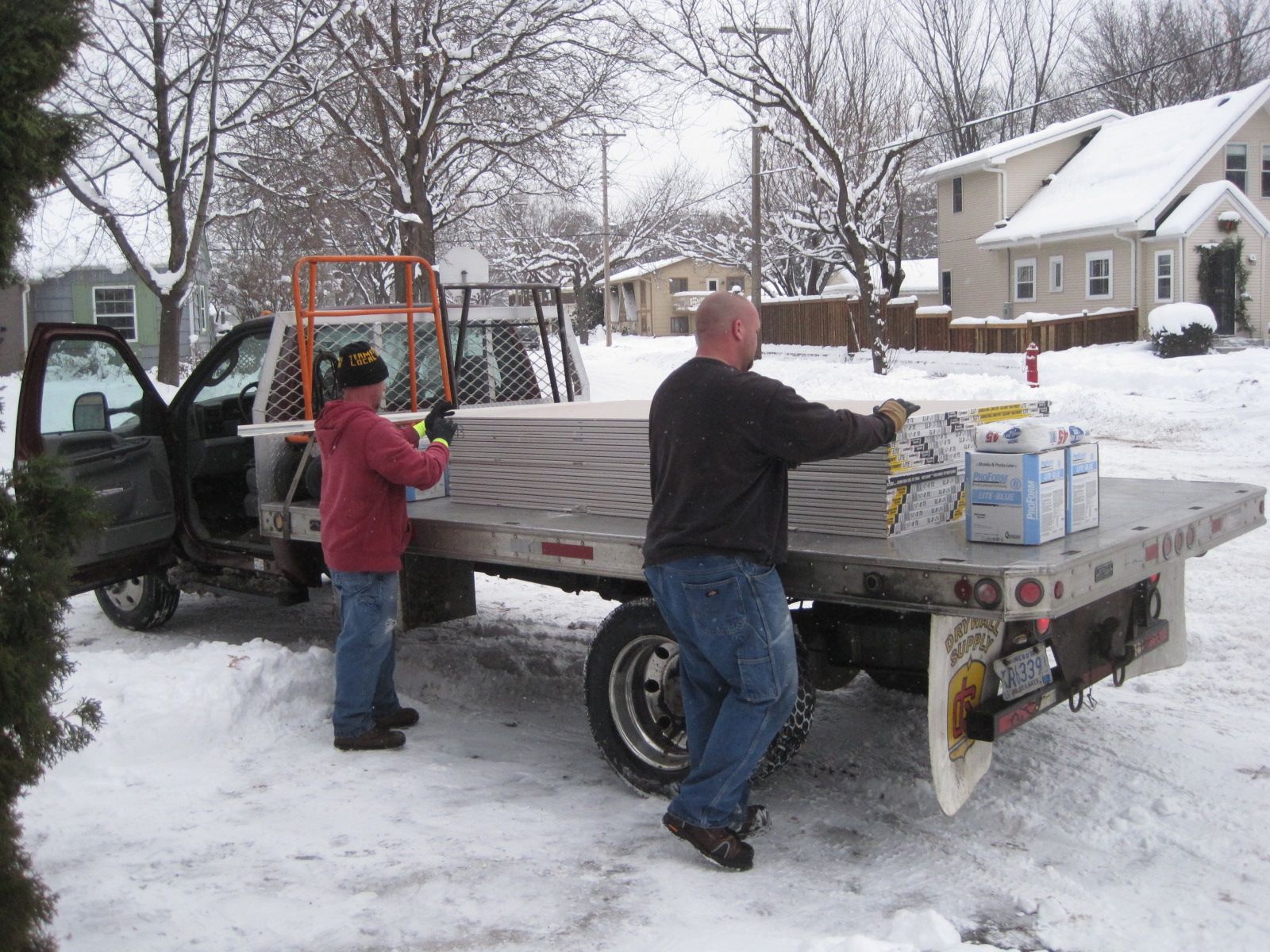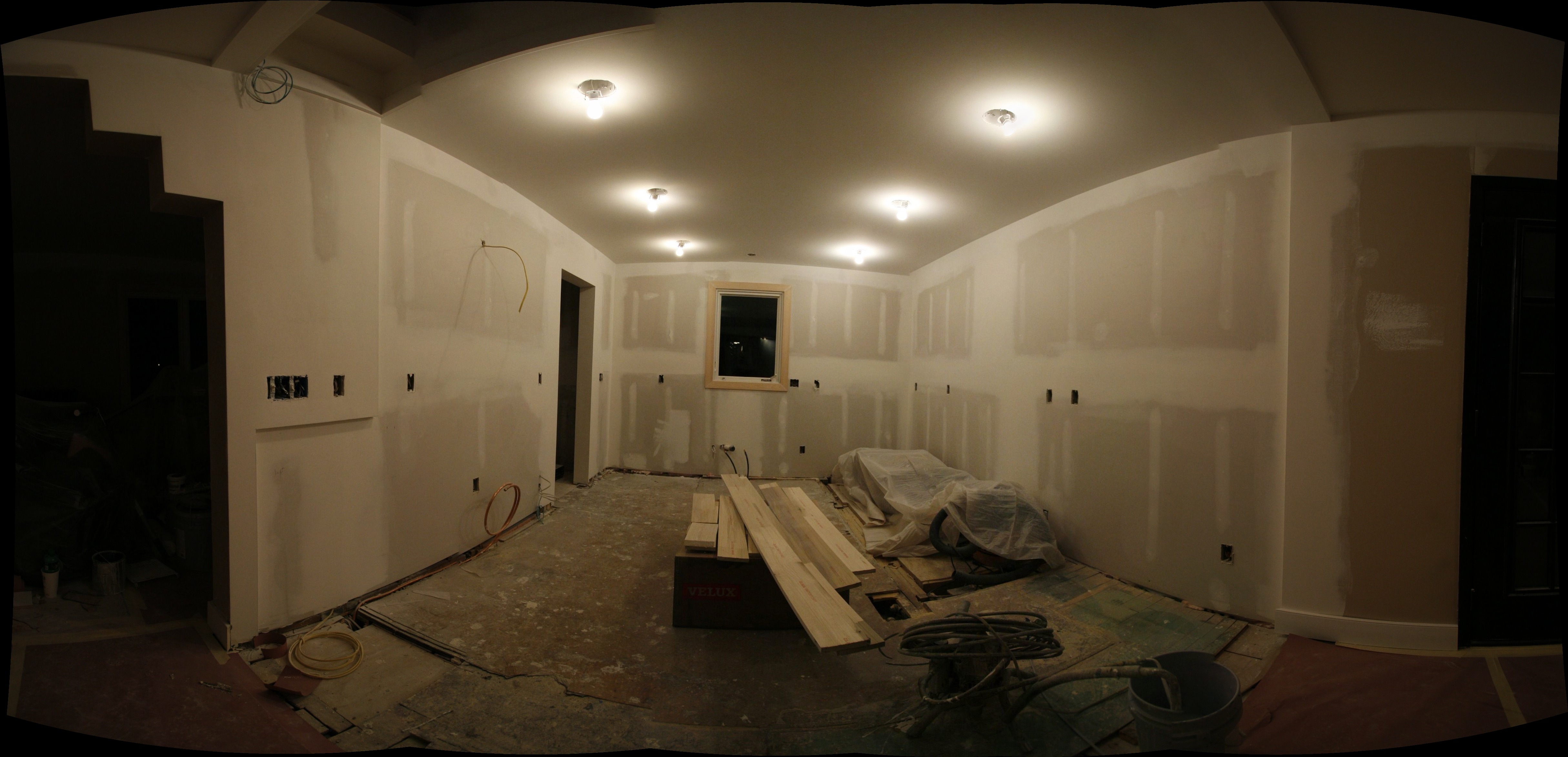
Sheet rock panels and materials are delivered to TOH by the first in a series of specialized teams. This is the beginning of a difficult but necessary step in the renovation.
When my house was built, walls were constructed with “lathe and plaster”, thin rough strips of wood nailed to the studs and coated with coarse plaster, which oozed between the strips and clung to the structure. The result was a wall that conformed to the irregularly cut framing, warping as needed. A final top coat of fine-grained plaster made the wall smooth but not flat.
Modern walls are assembled from “sheet rock”, large panels of gypsum encased in paper. They are part of an automated house-building system, uniform standard sizes that fit stud dimensions, butting up perfectly against each other, with their edges shaped in such a way that one layer of tape is exactly the right thickness to make the resulting surface smooth and flat.
For the greatest efficiency in the construction of sheet rock walls, specialists have evolved. There are teams trained to deliver the raw material, pairs of drywall sheets, just at the limit of convenient lifting and moving to their staging place at the job site. Other teams specialize in the attachment of the sheets to the wall studs and ceiling joists: standard wall sheetrock is 1/2”, ceiling sheetrock is 5/8” (the better to stand prone against the forces of gravity). Armed with battery-powered drivers, the panels are rapidly hung by the installers using screws specially designed for the purpose. There is a flurry of rapid motions, cutting and fitting edges, locating outlets and routing exact openings for them.
As impressive as this activity is, it is not a precision process. The rock hangers know that gaps and errors will be covered and corrected by the next specialized team: the tapers.
The tapers are responsible for the final smooth wall. They apply tape and “mud” to fill in over the mounting screws, seams, and corners. The mud is a plaster mix that is applied liberally over any and all areas that have need for it. The workers that do this work are on a tight schedule and so the mud is troweled rapidly, with splashes, drips and blobs flying in all directions, the philosophy being that it will be sanded back flat after it dries. The result is that tapers (“mudders” as Portia calls them), leave a trail of plaster slime behind them and on everything they touch or even just walk past. It is a messy process, made worse by another when the walls are sanded and fine plaster dust fills the air and settles on everything.
This is the state of the art in making walls for the homes we live in. The process is messy, yes, but the result is that the walls are smooth and flat with knife-edge perfect corners. Life is filled with tradeoffs, and spattered, splattered, and dusty as it is, This Odd House now displays a truer line to its visitors and occupants.

